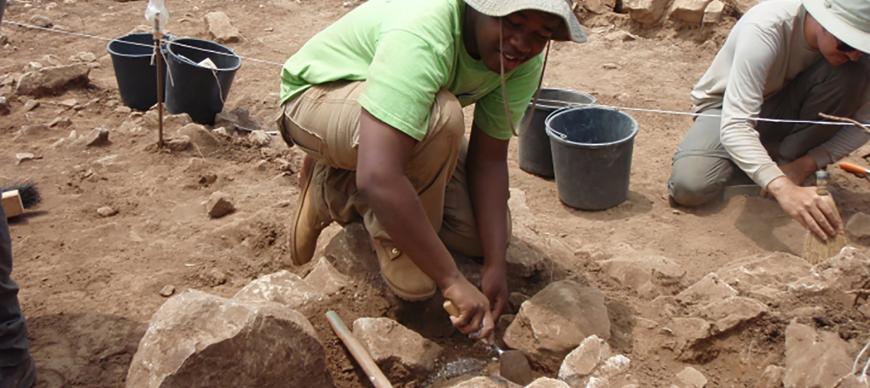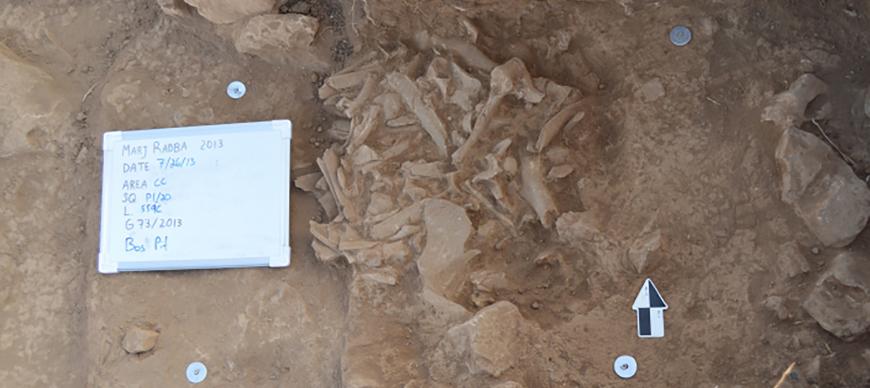The fifth to fourth millennia BCE in the southern Levant witnessed dramatic changes in socio-economic organization. During the Chalcolithic period (c.4500-3600 BCE), people invented new ways to treat the dead, such as formal cemeteries and secondary burial practices, new technologies, such as metallurgy, and new, tentative exchange networks extending from Anatolia to Egypt. These phenomena underscore profound shifts in the ways that people understood their social and physical landscapes. Scholars of southern Levantine prehistory struggle with interpreting why these changes occurred and their impact on social, political, and economic organization. Interpretations, however, rely on evidence collected from a few major archaeological sites, primarily located in the Negev desert and the Jordan Valley. In stark contrast, our understanding of late prehistoric life in the lower and upper Galilee is extremely limited because no radiocarbon dates, coherent architectural plans, or pottery assemblages are published from a Chalcolithic village in the Galilee. An objective of this field research project is to establish a baseline for broader comparison through research at a range of sites in the Galilee. In this way, the region will be better represented. With this goal in mind, the Galilee Prehistory Project aims to collect data from a variety of different sites dated to the fifth through fourth millennia (Chalcolithic Period). Concluding excavations at the site of Marj Rabba (Har Ha-Sha’avi) after six field seasons, we are preparing for the next phase of this long-term field investigation.
The second phase of the Galilee Prehistory Project is the exploratory investigation of the region in the hope of locating another fifth millennium BC site. Our team investigated two potential sites, Wadi al-Ashert (Bet Netofa) and Tel Nes (Sanjuk). In 2015 the GPP team conducted an intensive survey (geophysical, pedestrian, and Unpiloted Aerial Vehicles [drones]) and limited excavations (shovel tests) along the Wadi el-Ashert, a small drainage area on the western side of the Bet Netofa Valley. Previous salvage excavations (by the Israel Antiquities Authority) identified 6th to 5th millennium remains suggesting that this might be a site worthy of additional investigation. Unlike the upland position of Marj Rabba, Wadi al-Ashert/Bet Netofa is low in the valley, directly on fertile ground near a water source critical to the mixed agro-pastoralists living there. Our primary goals were to determine the possible boundaries or size of the site, the chronological range of the occupational evidence, and the depth at which these occupations were found. In addition we were interested in acquiring insights into the preservation of in situ deposits and features, particularly those which might date to the Chalcolithic [c. 4600—3600 BCE]. We used geophysical remote sensing (electromagnetic) in order to identify preserved sub-surface features and architecture, which we used at Marj Rabba with great success. Although we were able to identify remains from the 6th – 5th millennium BC, the site was deeply buried and impacted heavily by modern development. For these reasons, we sought a new field site.
In 2017, we turned to the site of Tel Nes, or Tell Sanjuk (as it was originally known) located in the eastern Galilee. A volcanic cone near Rosh Pina, Tel Nes is in a large basalt region. The material culture recovered during an Israel Antiquities Authority pedestrian survey suggested that the site dates primarily to the Iron Age and Chalcolithic. The Iron Age wall at the top, and a possible cistern, are visible in the aerial drone images, as are the structures along the lower slopes. Our excavations recovered Chalcolithic material culture, but also revealed that preservation was extremely poor, and we suspect that many of the stone foundations on the surface are much later in date. These findings suggest that this site has a low potential for a longer term investigation into the Chalcolithic.
Ultimately, neither site demonstrated potential for additional field research. During 2019, the GPP team will examine another prospective site only a few kilometers south of Tel Nes/Sanjuk. Earlier salvage excavations identified a Chalcolthic site.
Designed to answer specific research questions, the Galilee Prehistory Project also integrates students and volunteers in scientific fieldwork and analysis. A field school offering UC credit provides training for graduate and undergraduates, and we typically bring two University of Chicago Metcalf interns each field season. Moreover, we have included high school students in the field. In 2012 and 2013, five students and an instructor from the Rowe-Clark Math and Science Academy in Chicago participated in the excavations and survey at Marj Rabba. By partnering with Rowe-Clark, high school students who are unlikely to have the opportunity to engage in field research participated in a research project and to experience the people, food, and culture of Israel. We demonstrate the accessible nature of research, but in addition, we discovered that introducing the high school students to undergraduates, graduates, and professionals creates an important chance for these young people to gain insight into higher education and future career strategies.





